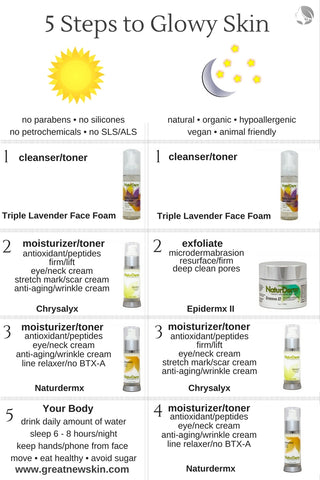
Maybe you've never thought of this, especially for kids, your sunscreen choice and how you apply it may change...
You also may not have considered this before, but you can choose your sunscreen based upon your different exposure needs.
For example, if you’re going to be in the water, or sweating, you obviously want a water resistant high exposure sunscreen, vs. if you are just going about your daily events. I say that, because sometimes we forget that UV exposure occurs even with things as simple as driving in a car. Have you ever had pink, or even aged spot browning of the skin along your jawline and wondered where that came from?
Daily use, choose something less heavy, without silicones and a good zinc base.
Did you know that spray sunscreens make up 50% of total sunscreen sales? One thing to keep in mind, to tamp down an oily film, they often contain high levels of alcohol, which can impact your skin. So if you notice your skin reacting, or feeling dry and you tend to use spray sunscreen a lot, you may want to switch it out. Some are concerned about the risk of inhalation of ingredients, and with some ingredients, that is a valid point that manufacturers attempt to lower with spray systems that regulate the droplet size to > 10 microns in diameter, to lower deep inhalation into the lungs. A good practice is to make sure to turn your face and have someone else apply your sunscreen for you, and especially when you are spraying sunscreen onto your child, have them turn their face away from the spray.
Stick products contain more waxes to help the product hold its shape over 120”F.
Perhaps you are a cyclist and need a higher level of protection on certain areas of your body, or you need to keep your sunscreen with you in an easy format that won’t explode out the cover when you open it up, due to heat or pressure.
Lotions and creams fall into the category of with emulsions or without. Think of a bottle of oil and vinegar. You can shake it up, but it settles out. Something has to be added to bind the properties. When you apply a lotion, or cream, the water evaporates leaving the oil and sunscreen component on the skin.
A Lotion, or cream that is a water-in-oil emulsion will feel heavier, or greasy on the skin, and are more water resistant. A lotion, or cream that is oil-water emulsion can be as much as 60% water. Looking at an ingredient list won’t disclose which type of emulsion is present in the lotion, or cream. An easy way to see, is to place a drop of product into a glass of water, if it disperses it is an o/w (oil – water) if it forms a ball it is a w/o (water-in- oil) emulsion.
More info:
http://www.skininc.com/skinscience/ingredients/Anatomy-of-a-Sunscreen-370696051.html?utm_source=newsletter-html&utm_medium=email&utm_campaign=SI+E-Newsletter+03-02-2016















